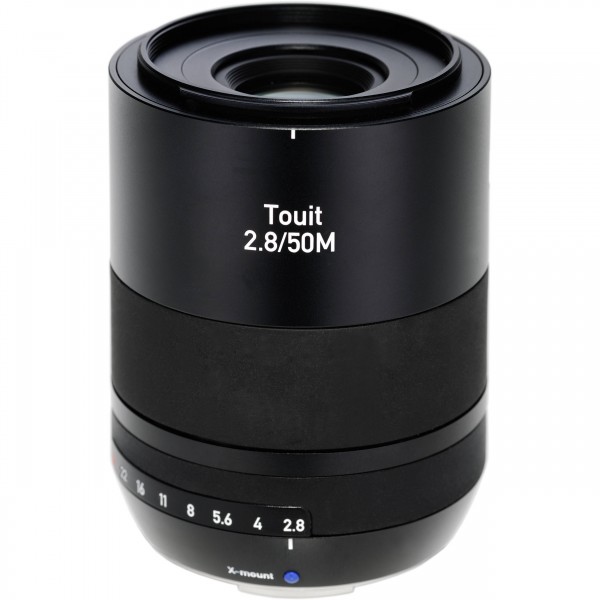Prices incl. VAT plus shipping costs
Delivery time approx. 5 working days
The article can be wrapped as gift. You can choose from various wrapping options.
Smooth and reliable autofocus
The design of the autofocus system requires extremely precise shifting of certain lens groups. Depending on the lens (group) weights to be shifted, different motor types can be used. The focusing system of the Touit lenses from ZEISS has been designed in such a way that no restrictions had to be placed on the optical design, while still guaranteeing a robust and smooth autofocus mechanism.
1:1 imaging performance
Small things and minute details can be imaged in their original size with the Touit 2.8/50M. At the closest focusing distance, subjects as large as 15x23mm can be captured full frame, corresponding to an impressive maximum magnification of 1:1. Even at such short distances, the Touit 2.8/50M delivers the same outstanding imaging performance as at medium and long shooting distances. Minimal distortion, highly corrected chromatic aberration, minimal field curvature, superbly corrected coma and astigmatism allow the subject to be faithfully imaged, especially with particularly high-resolution modern sensors.
Comprehensive compatibility
The ZEISS Touit lenses have been specially developed for Sony NEX and Fujifilm X camera systems with APS-C sensors. All functions of the cameras, including autofocus, are therefore excellently supported.
Excellent resolution and high contrast
Rich, vivid colors are a must for creating a lasting impression. However, stray light in the lens leads to a brightening of the image, which then becomes particularly noticeable in the shadow areas. The image contrast decreases ? the image appears low in contrast and bleached out. For this reason, ZEISS brings together various specially developed techniques that reduce unwanted stray light.
Floating elements design
Modern camera technologies and high-resolution digital image sensors are demanding more and more performance from lenses. The modern Floating Elements Design compensates for aberrations in ZEISS lenses at different distance settings. This is done by changing the axial distance of individual lenses or lens groups from each other. The adjustment of the lens distance is coupled to the distance setting, so that the correct correction is always obtained. The mechanical construction of these lenses is very complex and the processing must be particularly precise ? both of which are ZEISS's core disciplines.
Ideal aperture properties
Photographers want to guide the viewer through the image. A minimal plane of focus is often used as a design element. This deliberately keeps the background out of focus and draws the viewer's attention to the actual subject. Touit lenses have apertures with nine blades that form an almost circular aperture. This creates a particularly harmonious effect of the out-of-focus areas of the image (bokeh).










